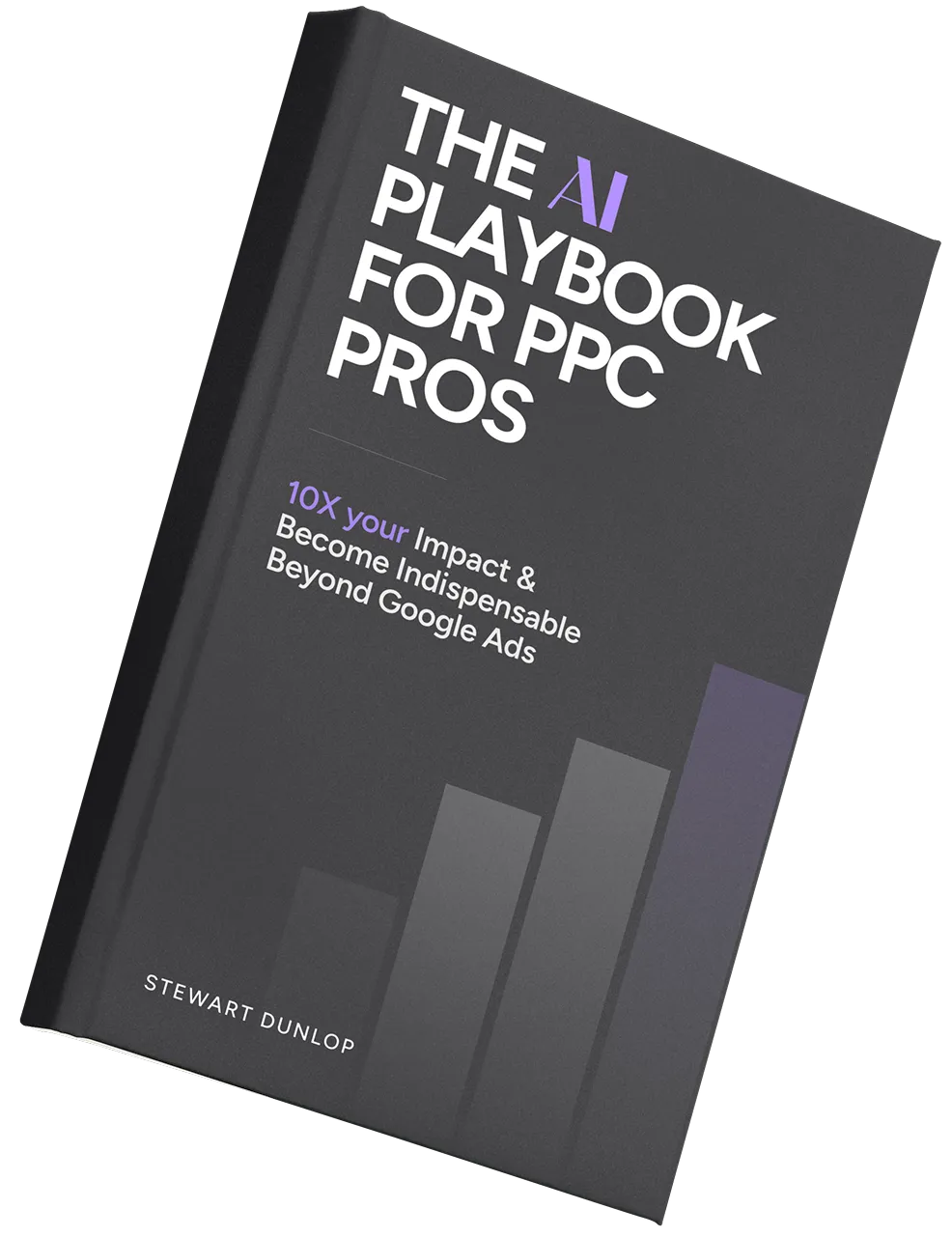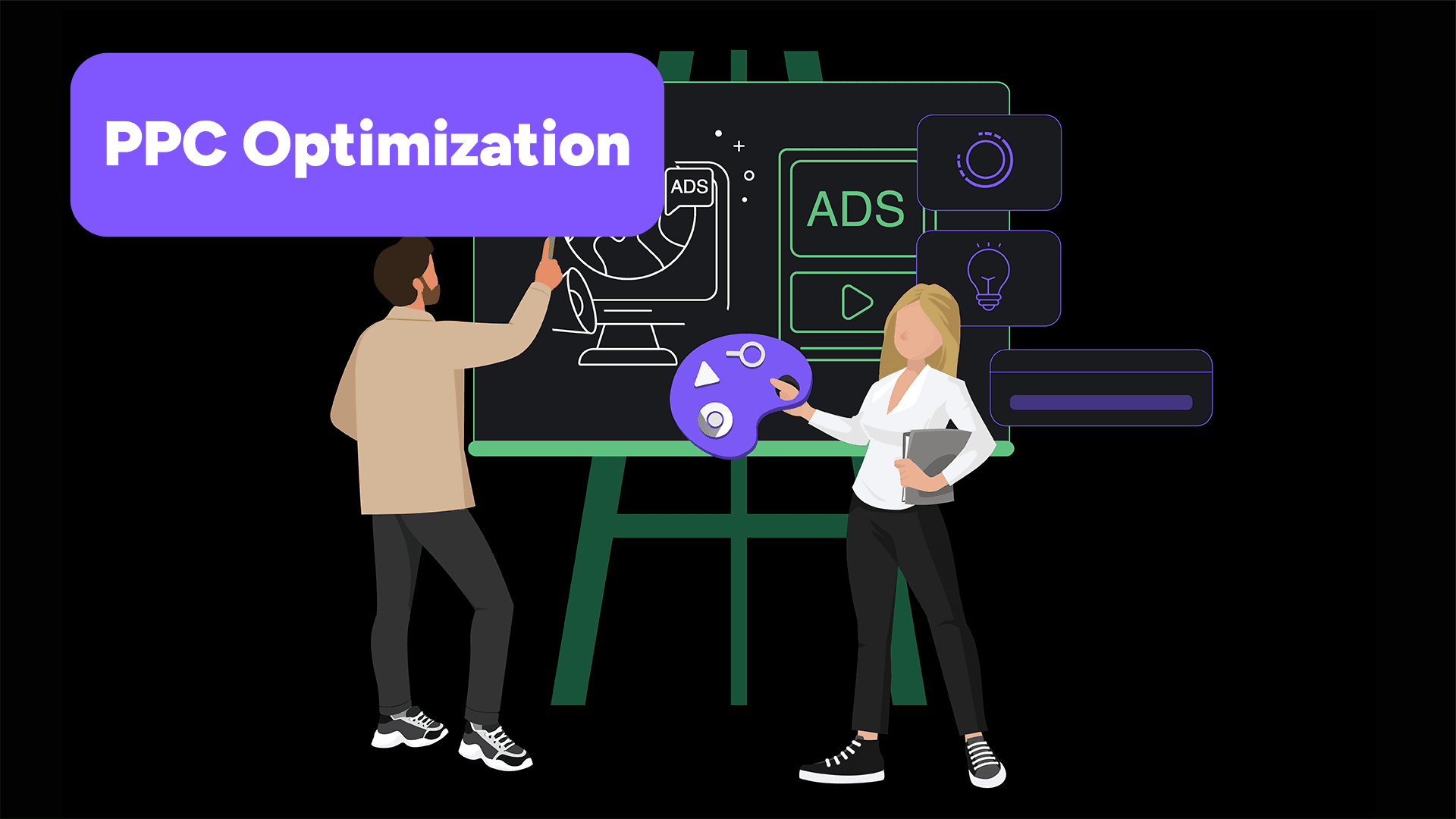
PPC optimization helps marketers get more from their ad spend by increasing performance and profitability.
The improvements you can make to PPC performance are truly remarkable if you optimize your PPC campaigns the right way.
If you don't take a proactive approach to PPC optimization, you're likely to have mediocre results & returns. After all, approximately 76% of Google ad spend is wasted - a mind boggling statistic 😓
What is PPC Optimization?
Simply put, it's the process of monitoring and improving your PPC ads account in order to achieve a higher return on investment (ROI) and a lower cost per acquisition (CPA).
Getting more and more customers for a lower cost is the name of the game.
There are a number of specific factors that we can optimize in PPC advertising to reach this goal, including budgeting, keyword selection, bidding strategy and A/B testing.
In this article, we're going to dive deep into exactly how you can optimize your PPC campaigns for maximum returns and lower costs.
15 PPC Optimization Strategies
At PPC.io, our AI tool helps brands all over the World get more profitable from Google ads, and we even have our own Slack community for PPC.
Our team has put together the ultimate 15-step checklist of PPC optimization strategies that we actually use to for our own clients within their Google ads campaigns.
And now, we're sharing all our secrets and processes with you.
👉 Let's dive in.
1) Performance
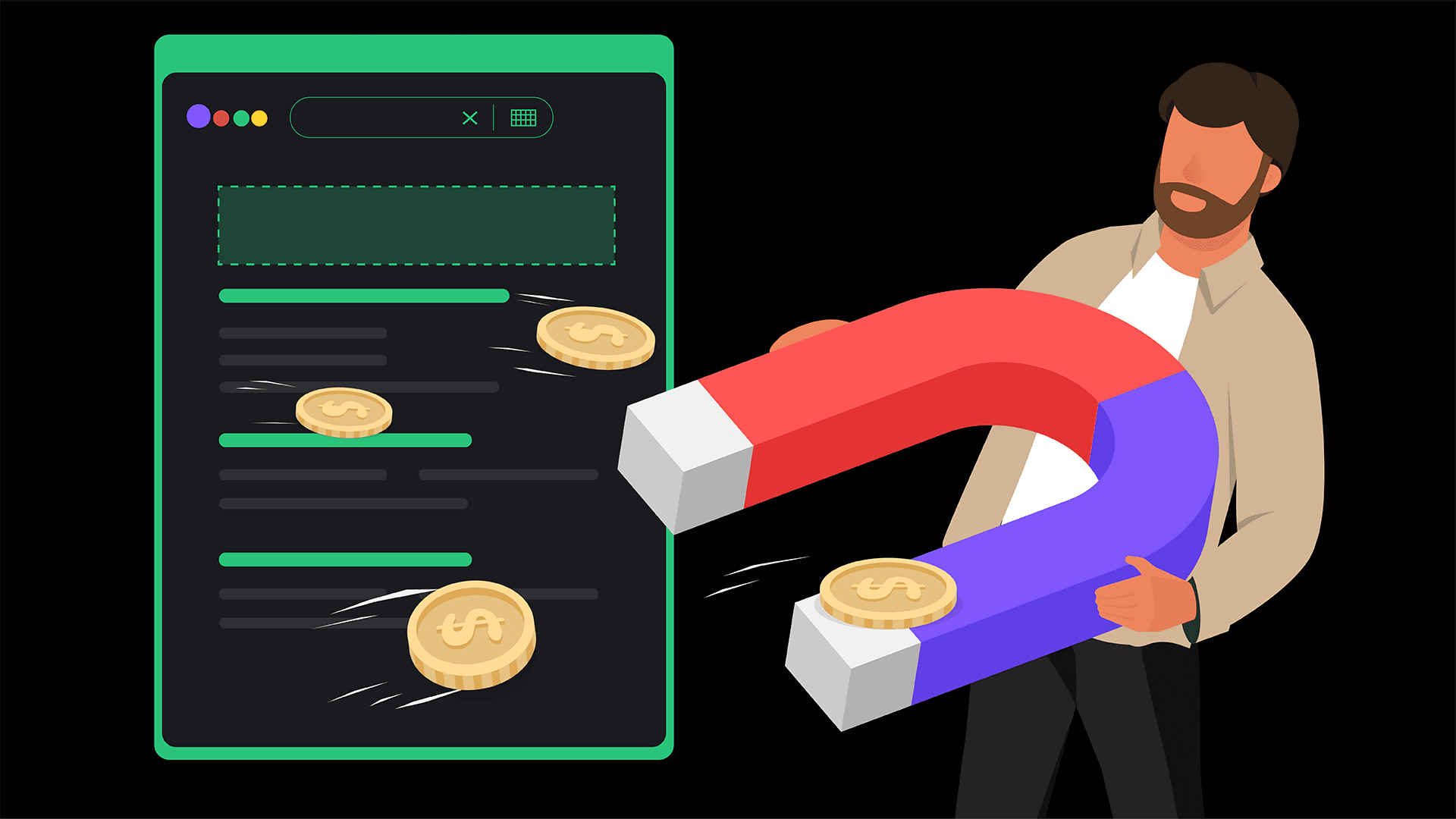
This is first on our list because it's the most obvious thing that all PPC marketers look at on a regular basis - performance.
- Are we hitting our cost per conversion goals?
- Is our cost per click meeting expectations?
- What actions are driving our conversions - calls, email forms, SMS?
- Are such trends impacting our performance? (E.G. a gardening client will have lower leads in Winter)
At our agency, performance is always the first thing on our optimization checklist, because it's going to guide everything else.
If performance is mind-blowing and we're blowing all of our KPIs out the water, then we can rest easy 😎
But often that's not the case, and in reality we need to carefully consider aspects of performance.
Here are a few examples below:
- Why are we getting plenty of phone goals but no form fills? Is there a problem with our landing page?
- Why has our cost per conversion gone up? Is there more competition or are certain ad groups bringing our averages down?
- Why are we not tracking micro conversions like email signups?
So looking first at the conversion performance is absolutely crucial on our path to successful PPC optimization.
2) Budget Allocation
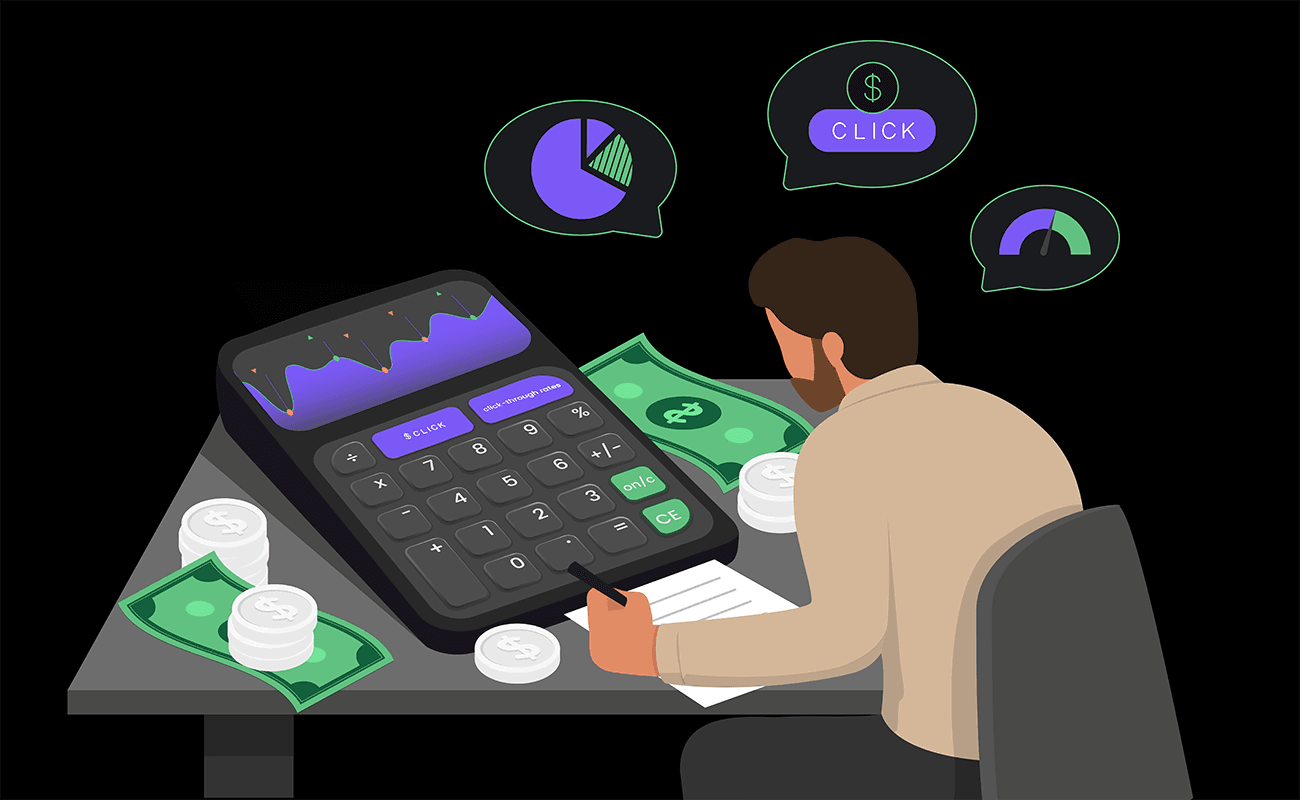
Next on the list is the following 'simple' question:
Are we spending the budget across our PPC account?
Depending on your answer, direct yourself to the right place below.
If the answer is yes ✅ then ask the following questions:
- Are results optimal?
- Should we increase our budget?
- Should we re-allocate budget from certain ad-groups / campaigns that are over / underperforming?
If the answer is no ❌ then ask the following questions:
- How is our impression share for ads looking?
- Are we targeting enough keywords to meet our spend requirement?
- Is our audience targeting too strict? (e.g. exact match keywords in a tight geographical location)
Whether we're spending our budget or not, it will open up a whole series of questions that will help inform you to make the next sensible step in PPC optimization.
And that's exactly what we want!
3) Bidding

Next on the list is determining the optimal PPC bidding strategy.
When it comes to bidding, we wrote an exhaustive guide on PPC bidding strategy here.
But for the purposes of weekly PPC optimization we really should be asking ourselves one glaring question -
Are we bidding enough money to reach out KPIs?
Let's talk through a couple of specific examples to show how we might adjust our bidding strategy based on this question.
👉 Example 1 - Home Services Company 👷♂️
- Our client has told us that a CPA anywhere between $30-50 is profitable.
- Right now we're using an automated bidding strategy with a target CPA of $30.
- But our impression share isn't as good as it could be...and our conversions are down from previous months.
✅ Action - Let's try increasing our target CPA incrementally by another $5 to boost our impression share, since we know that our client will still be happy with that outcome, and it will make us more competitive.
👉 Example 2 - Ecommerce Store for Running Shoes 🏃♂️
- Our client has told us that a ROAS of 4X across the board is excellent.
- Right now we're using an automated bidding strategy with a target ROAS of 5X
- Our branded campaign is hitting 15X ROAS with this 4X goal, which is great!
- But some other campaigns are really struggling to get impression-share (shown on Google) with a 4X ROAS goal
✅ Action - Let's try decreasing our target ROAS on those other campaigns lower. In theory this should help us increase our impression share, and we can still be very confident that our branded PPC campaigns will help us get those converisons over the line later on.
Bidding Tips
Some examples of other bid adjustments you could make:
- Pause poorly performing keywords
- Raise bids to get more share at top of page
- Lower / stop bids from devices that aren't performing
- Maximize conversions based on what worked in the past
For any bid strategy adjustments, we always strongly advise taking things slowly and within reason.
These are optimizations that you can tweak over time to find the perfect balance of a bid that works for you and keeps the account profitable.
Don't go reducing or increasing bids by 100% overnight. Take it easy.
4) Ad Copy
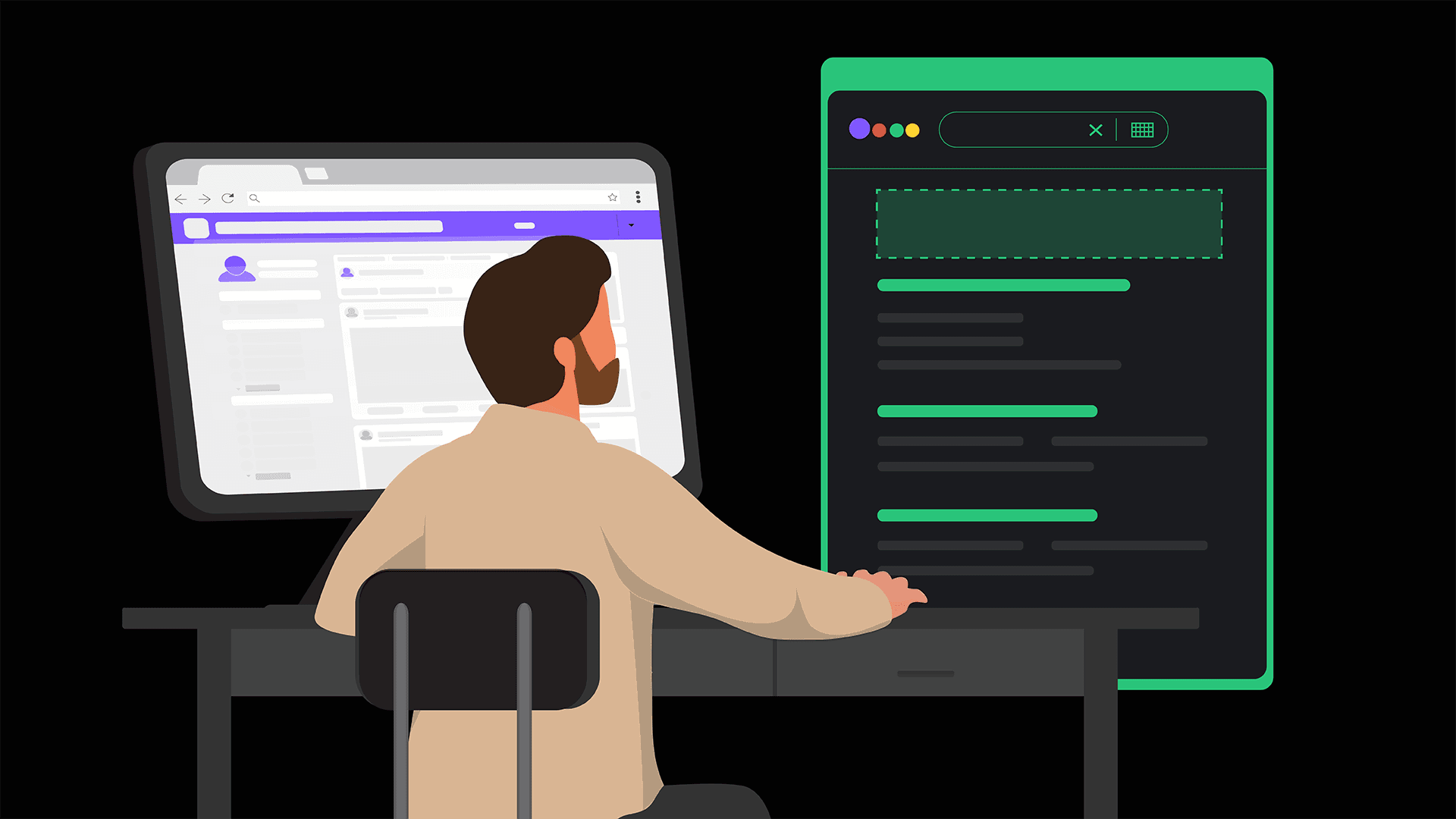
Before we look at keywords (in the next part) it's vital that we first of all examine and optimize our Google ads copy ✍️
We always start with ad copy, because our keywords should match the ads, not the other way around.
It's important to objectively looked at all of your ads and consider if they are up to scratch.
We can experiment with different ad copies, and take inspiration from competitor ad copy too. Use A/B testing to figure out what the most effective strategies are, and feed Google's RSAs (responsive search ads) with enough headline variations so that Google's own machine learning can find the best combination for you.
Our process for optimizing ad copy is pretty simple:
- Manually check yourself 1 week after launching initial ads.
- Change any headlines that don't feel right.
- Cross-reference competitor ads to check for inspiration.
- Send to a colleague for a second glance & opinion.
5) Keywords
Our next PPC optimization step is to look at your keywords. The process for this one is straightforward.
- Look at your search term reports within Google Ads.
- Negative Keywords - If there’s a big increase In impressions or clicks for irrelevant keywords (on broad match campaigns) we might want to add them as negative keywords.
- Positive Keywords - Similarly, we might find a new previously undiscovered keyword that's converting well on broad match campaigns. If that's the case, we may want to consider creating a new ad group around it and a dedicated landing page around it.
It's really about staying on top of our negative keywords here, but you should always be running some form of broad-match campaign which can help discover new keywords that you'd never even considered before 💡
6) Adjust Ad Groups

Next on our checklist of PPC optimization strategies is to adjust our ad groups accordingly.
As we've already mentioned, it's important to examine our keywords, and with that also comes making optimizations to our ad groups
🔑 Key points below to consider.
- Regularly review the performance of your keywords and ad groups.
- If impression volumes warrant it – you might split an ad group.
- Take the low click-through rate keywords (Which have high impressions) and refine the advert they serve.
- This might also highlight that your sitelinks aren’t quite fit for purpose, or a different landing page would better serve the user.
- It could be as simple as removing keywords that are surplus to requirements.
- OR applying additional negative keywords for that ad group to improve the relevance of what the user sees.
7) A/B Testing
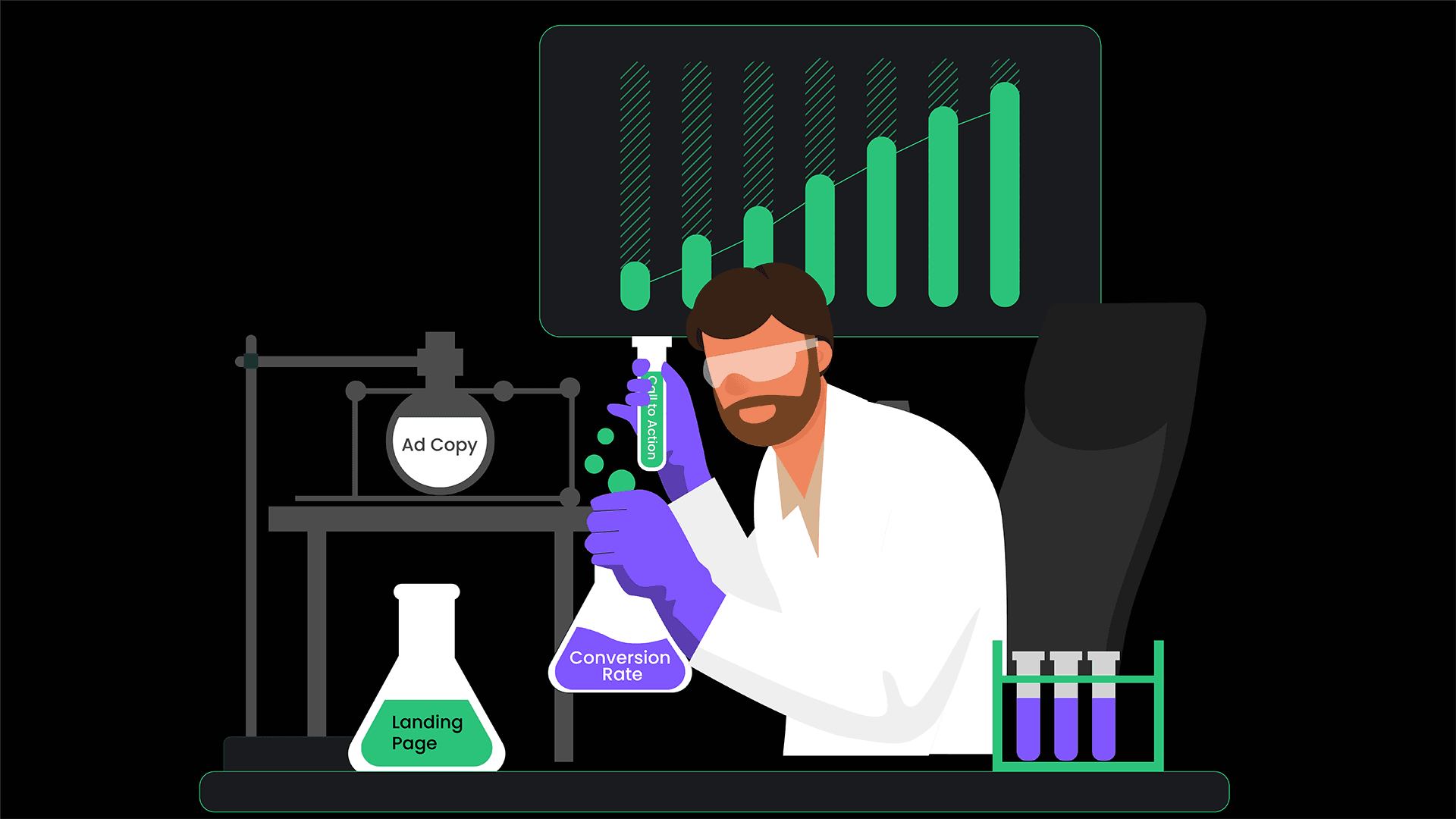
A/B Testing & experimentation is absolutely key to successful PPC optimization.
In fact, this is arguably the single most important point on our list!
"The top 0.1% of marketers split test 11X more than everybody else." - Alex Hermozi, CEO at Acqusition.com.
Here are some A/B test ideas that you could be running:
- Landing page variations
- Landing page CTAs
- PPC ad extensions
- PPC ad copy
- Page Headlines
- Broad match vs. Exact match
- Performance Max vs. Standard Shopping
- Offers e.g. "$100 Free Credit" vs. "Buy One Get One Free"
For optimal results, you should be running single variable tests.
That means you only change one thing at a time - Could be the landing page, could be the keyword targeting (broad vs. exact) - But only have 1 variable so that the experiment is a fair one. Think like a PPC scientist! 🧑🔬
For more ideas, check out our detailed PPC testing guide.
8) Competitor Analysis
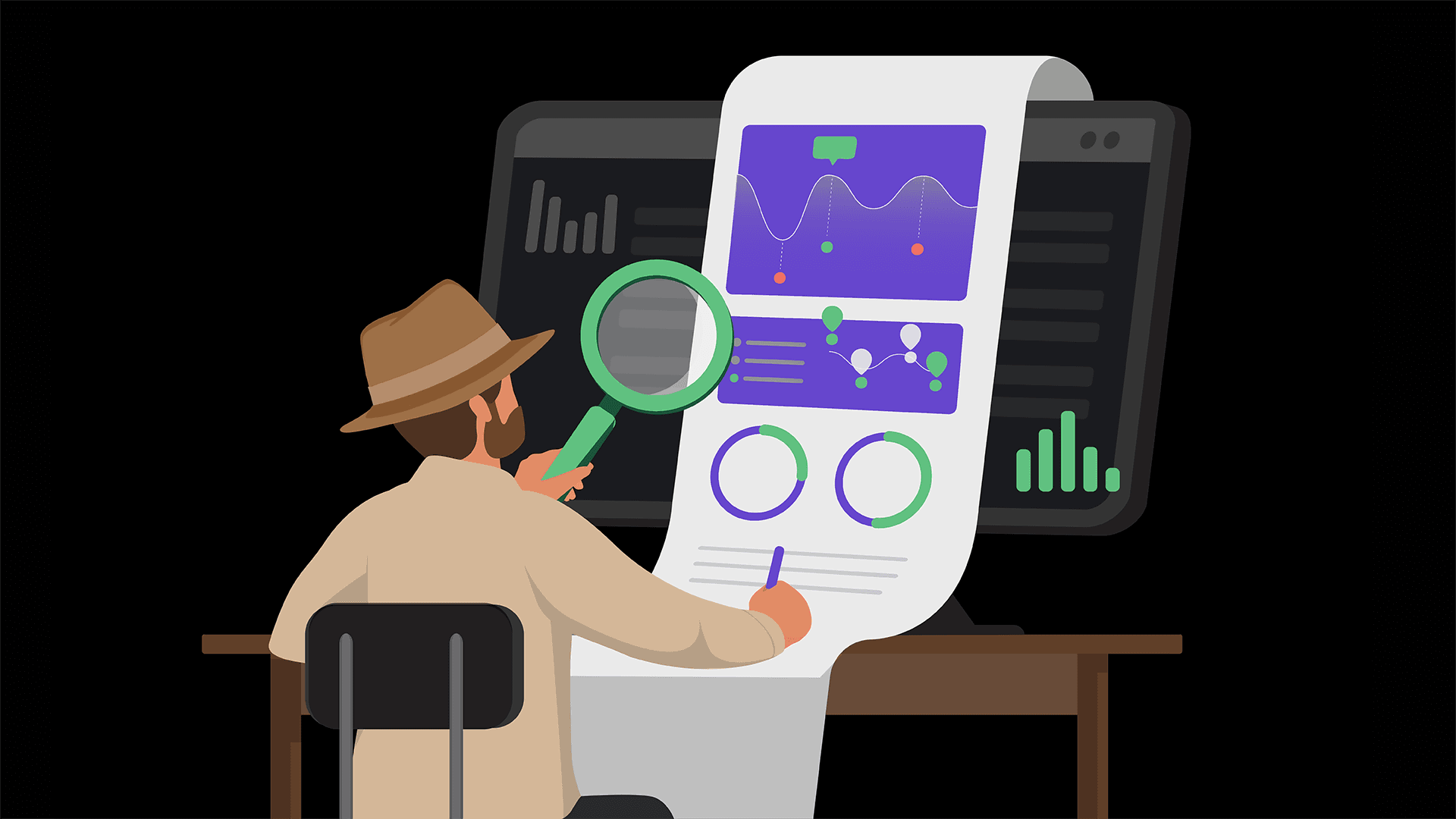
Next on our checklist is competitor analysis 👀
The goal here is to see what we're doing against our competition.
Some things to constantly be checking:
- What ad headlines are our competitors using?
- What landing pages do our competitors have?
- Are they optimizing for form leads, call bookings, direct phone calls?
- What offers or pricing strategy are our competitors implementing? Are we competitive?
This stage of PPC optimization is so overlooked. As marketers, we inevitably worry too much about what we're doing ourselves, and that's a mistake.
The reason being, is that we have to think about things from the perspective of our target audience
They're running a Google search in all likelihood comparing us against all of our competitors on things like price, perception, branding, trust etc.
It's for that reason that not regularly checking up on our competitors is a massive mistake.
At our PPC consultancy, we've fully automated competitor analysis by running scripts that automatically reveal our competitor's adverts and their offers.
We then use AI to score our competitor ad campaigns versus our own, allowing us to very quickly spot gaps in the market, and identify new campaigns that our competitors are running.
9) Conversion Rate Optimization
This point on the checklist has some similarities to the A/B testing section above, but with some key differences.
Conversion rate optimization is all about maximizing our return on investment AFTER we've received a click from our target audience.
We can have the best adverts and targeting in the World, but if somebody lands on our page and doesn't like what they see, they're not going to buy.
Improving CRO (conversion rate optimization) is a huge lever we can pull.
Think about it - If we can improve our conversion rate from 5% to 10%, that's literally a doubling in our PPC performance. The best PPC genius in the World couldn't achieve a 100% lift in performance from any other single activity.
That's the incredible power of CRO at play.
CRO Activities
Here are some things you should be checking to improve CRO:
- Do your call to actions stand out?
- Are your images relevant and clear? (Images are incredibly powerful for marketing, and often subliminal)
- Is the path to conversion easy & obvious for any visitor?
- Are testimonials & social proof clear and convincing?
- Is your value proposition clear?
- Is your page so good that it's difficult for a visitor NOT to convert?
- Is your landing page subjectively better than your competitors? (For this, services like UserTesting.com allow you to get unbiased feedback)
10) Lead Quality Checks
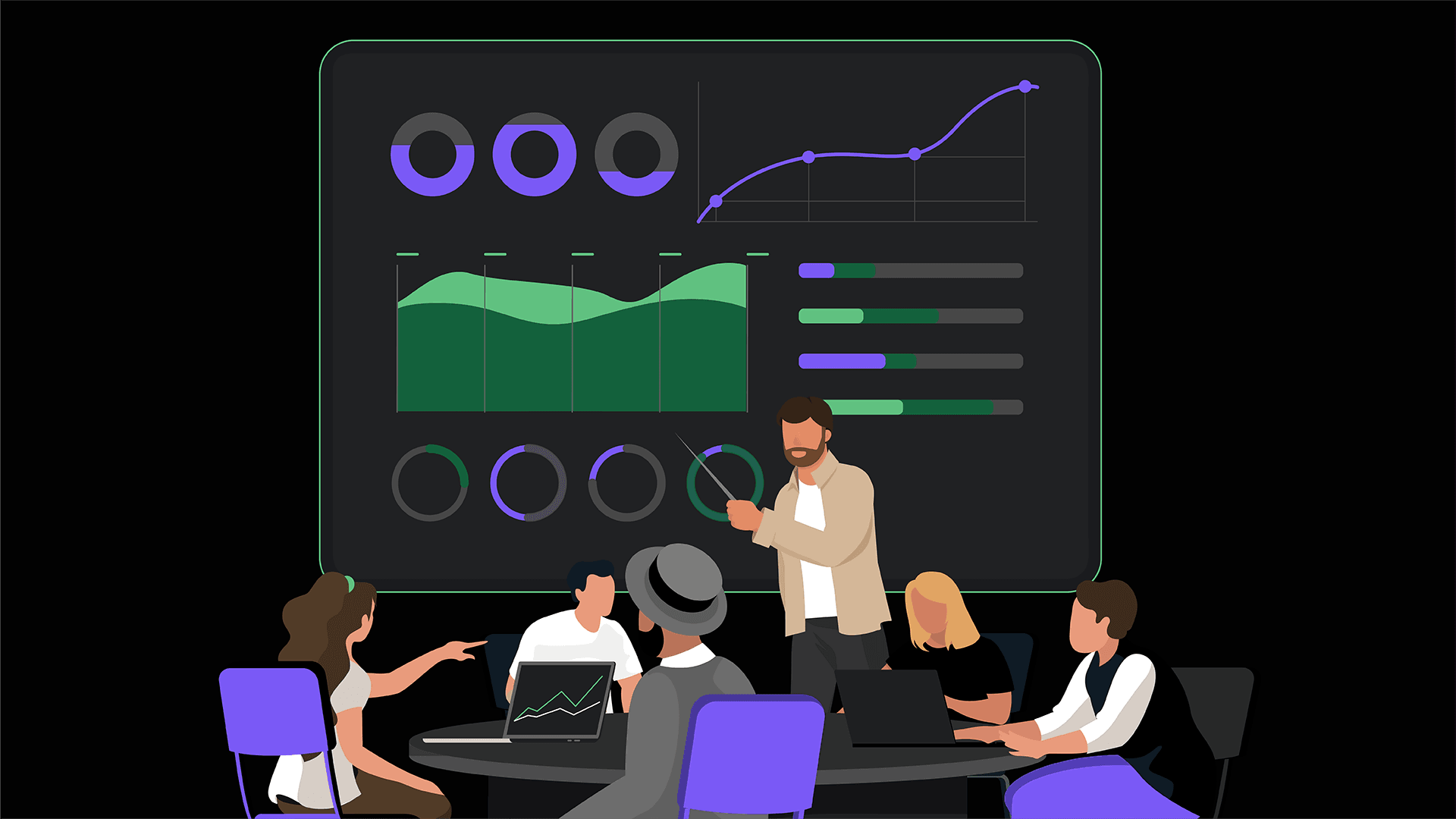
This is an absolutely vital piece of the PPC optimization puzzle - I cannot stress enough the importance of checking lead quality!
It's especially importany for lead generation campaigns like law firms or B2B brands, where the conversion isn't immediate, and instead relies on high-quality leads coming through.
Here is our process to optimize for lead quality:
- Capture website leads and track them in an output sheet or CRM system.
- Keep contacts updated by categorizing them as qualified or unqualified, and record sales made with attributed revenue.
- Identify unqualified leads based on factors such as being outside the target area or requiring the wrong service.
- Ask two key questions to qualify leads:
- Was the lead genuinely interested in the service?
- Did they have the appropriate budget?
- These questions help identify potential marketing or sales problems and guide further optimization efforts.
For lead generation campaigns, we have to feed CRM data back to Google Ads!
If we don't communicate with Google Ads and tell them which customers are qualified or unqualified, then their machine learning algorithm will keep pushing to convert customers that we deem as "conversions."
However by qualifying leads, we're telling Google what types of customers we are leads, so that their algorithm can optimize to send us more of those leads.
11) Lead Nurturing
Next on our list is lead nurturing, which essentially means the process of turning leads into converted customers with some additional steps.
Here is the exact checklist we follow at our PPC agency:
✏️ For Lead Generation Businesses:
- Assess how effectively our clients follow up with leads, ensuring they have fast, same day responses.
- Ensure contact rate is a leading KPI that our clients are aware of - If they're not contacting leads, it's going to impact PPC performance.
- If there are concerns that clients are not adequately contacting leads, conduct courtesy calls to confirm lead details and assess their validity.
- This step helps determine whether the issue lies in lead quality or the client's sales process.
- Consider implementing automated SMS flows - That means we send new leads automated welcome texts they second they enquire, giving them an immediate line of contact + the feeling like we care.
- Consider implementing automated Email flows - Again, this is so that we can automatically nurture the lead and push them on a path toward conversion.
🛒 For Ecommerce Businesses:
- Deploy effective abandoned cart email campaigns with personalized subject lines, relevant content specific to the abandoned product.
- Leverage customer service or CRO data to address why carts are being abandoned issues.
- Implement automated SMS flows with promotions and offers.
- Implement automated email flows and subscribe to mailing list.
12) New Offers & Promotions
Offers & promotions are an often-overlooked aspect of PPC optimization.
We all make assumptions that our brand or product is dominant, and will therefore take care of the conversion itself.
But again, this is a fallacy and we have to put ourselves in the mind of our customers.
As PPC marketers, we must regularly implement offers, sales, seasonal changes & new products to our strategy.
PPC Offers Checklist
Some key questions to ask here:
- Is our current offer converting well?
- Are competitors running successful offers?
- Can we work with our client on new offers that will improve conversions?
- What seasonal offers do we have lined up?
13) Cart & Checkout Optimization
Cart & Checkout optimization is exclusive to companies who are selling products or services online.
But it's incredibly helpful to optimize this aspect, because again even a very modest increase in performance here can have a massive impact.
Some thing to consider:
- Test different cart presentation options, such as in-line, pop-up, or whole-page carts.
- Capitalize on post-purchase opportunities by offering 1-click upsells, like complementary products, to increase average order value (AOV).
- Send immediate email offers post-purchase to again increase AOV.
- Maximize payments options.
- Offer free shipping on first orders (this is a must-have to compete nowadays)
- Add testimonials & social proof to checkout pages.
14) Remarketing / Retargeting
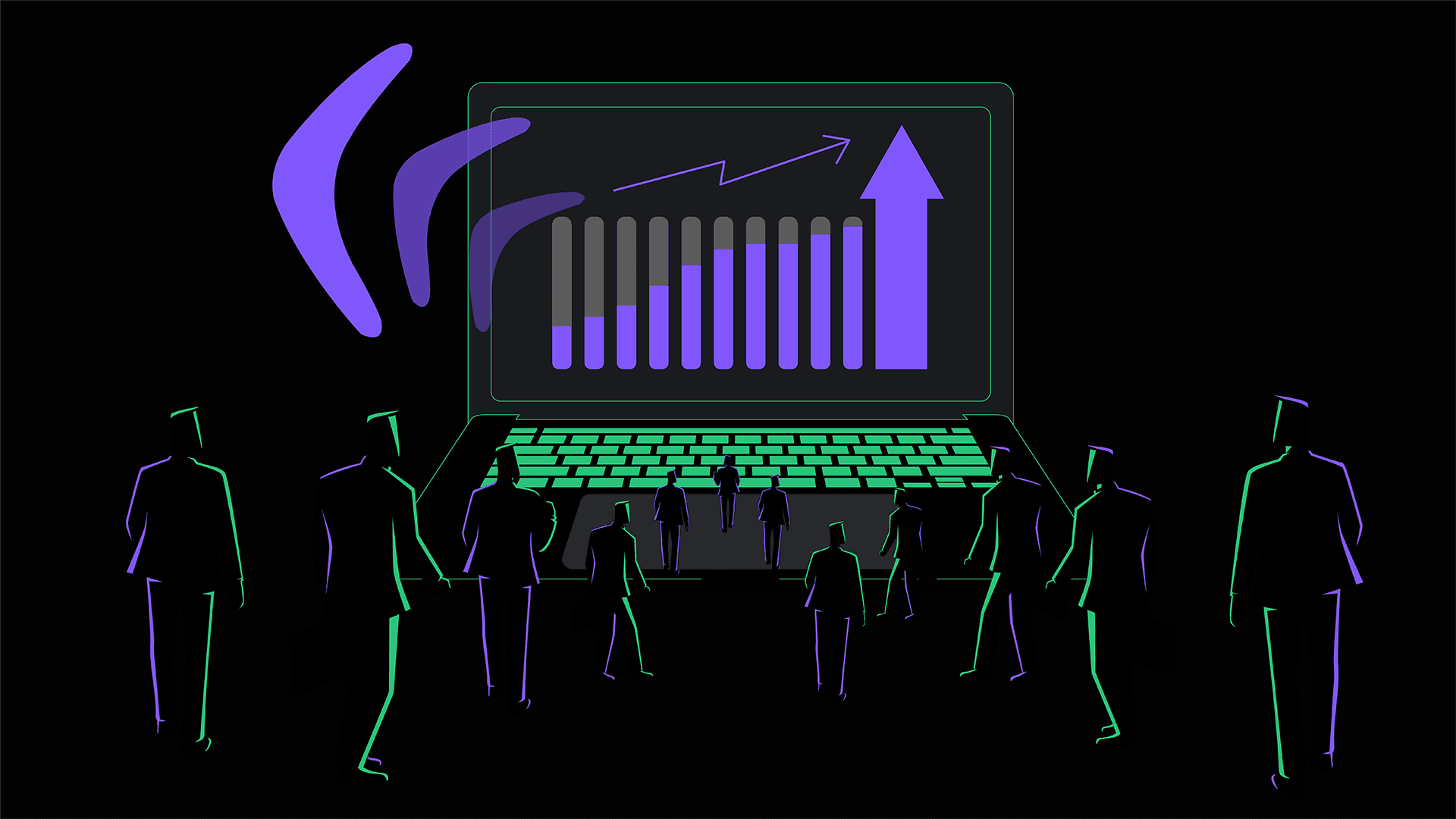
Honestly, both of these terms (remarketing & retargeting) are used interchangeably nowadays, and you can read more about them here.
In PPC advertising, what this boils down to is trying to convert customers who have visited your website, but have not yet converted.
Re-marketing then is our next PPC optimization step, and even if you can just get a solid re-marketing strategy in place (provided you've built enough data in your ads account), you're winning here.
It's one of the most effective layers you can add on to any PPC campaign to massively drive up your conversion rates & overall performance.
With Google re-marketing, you can actually push PPC ads to people who took a very specific action on your website like added a product to checkout but didn't purchase.
Then, you can show them re-marketing ads of the very same product they had sitting in their shopping cart 🛒 - That's pretty powerful right?
These ads will show up across the Google network on places like YouTube, Gmail, your favorite news sites etc. They essentially follow your potential customers around, prompting them to convert.
After you've nailed remarketing for Google ads, consider expanding your remarketing efforts to platforms like Facebook & Instagram, where people spend a huge amount of time.
15) Expansion
The final item on our PPC optimization checklist is expansion!
At our agency, inevitably we reach a point where we've hit a high level of performance on our initial campaigns, and our client's express an interest to increase their advertising spend and expand to new areas.
There is no one-size-fits all here, because eCommerce PPC and law firm PPC are going to have completely different channels that work.
But here's a list of expansion opportunities you should consider...
Expansion Opportunities 🌎
- Broad Match - Often, we'll start a project off focusing on exact-match keywords. But this will usually have its limits, at which point we need to start testing broad match in order to get more volume and opportunities in.
- Performance Max - This is where we let Google's machine learning takeover and advertise across the entire Google network for maximum performance. Normally, we'll only run performance max for Ecommerce clients.
- Bing PPC - This is such a huge opportunity. Bing surprisingly accounts for 18% of the Desktop market in the USA, and many people who use Bing are affluent and older, which is a great target market for many brands.
- LinkedIn Ads - These are incredibly powerful for B2B companies in particular, and we're seeing amazing results here at our agency.
- Reddit Ads - Again, Reddit seems to be growing and growing in popularity. Getting the messaging and design right is crucial for Reddit ads, but it's a very popular opportunity for expanding an overall ads budget.
- Re-Targeting - Are we re-targeting across multiple platforms? For example if we're B2B, are we re-targeting across YouTube, Facebook, Instagram, Reddit and LinkedIn?
Proactive Vs. Reactive Optimization
Optimizing reactively to PPC is a recipe for disaster.
At our agency, we teach our staff to be proactive, on the front foot and taking action 💪
Reactive PPC traits
- Constantly fight fires.
- Rarely bring new ideas to the table.
- Rarely look beyond what their advertising analytics platform is telling them.
- Make immediate reactions to ad platforms without thinking bigger picture.
- Mis-diagnosing problems or poor performance in ad accounts.
Proactive PPC traits
- Follow a methodical checklist.
- Look into how our client’s business actually works internally.
- Carefully consider what makes their customers tick and why they make purchasing decisions.
- Carefully consider the competitive landscape.
Ask questions beyond the Google ads manager account e.g.
- Why are we not converting customers?
- Why is our lead quality poor?
- Why are our competitors better than us? (competitor research is key)
Key Takeaways
Now that we're done, let's go over the key takeaways so that you can take your PPC ads optimization to the next level!
- Proactive Mindset - Successful PPC marketers are always forward-thinking, and never content with mediocre results.
- Analytical - Don't get tunnel-vision in your Google ads account. Look at the bigger picture, the competitive landscape & the connection to customers.
- Testing - Always A/B test and experiment. It truly is the only way to ever know if one way is better than the other. Make a hypotheses, then back it up with real testing!
- Increase AOV - Increasing your average order value is one of the hidden gems within PPC ads. If you can get this increased, it's going to make more impact than anything else on your ad campaigns.
- Improve Conversions - This cannot be understated enough. Put a massive emphasis on great web design & user experience, it will pay off ten-fold and your conversion rates will skyrocket.
